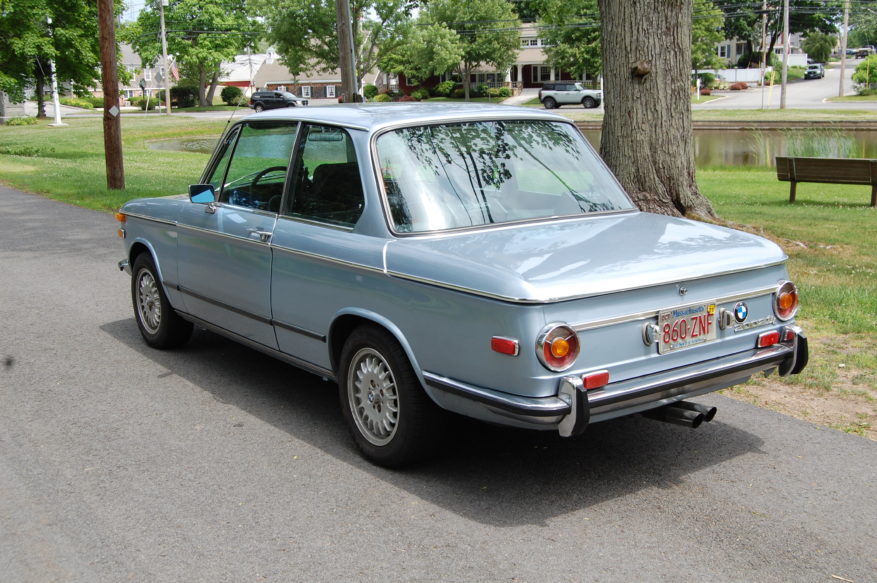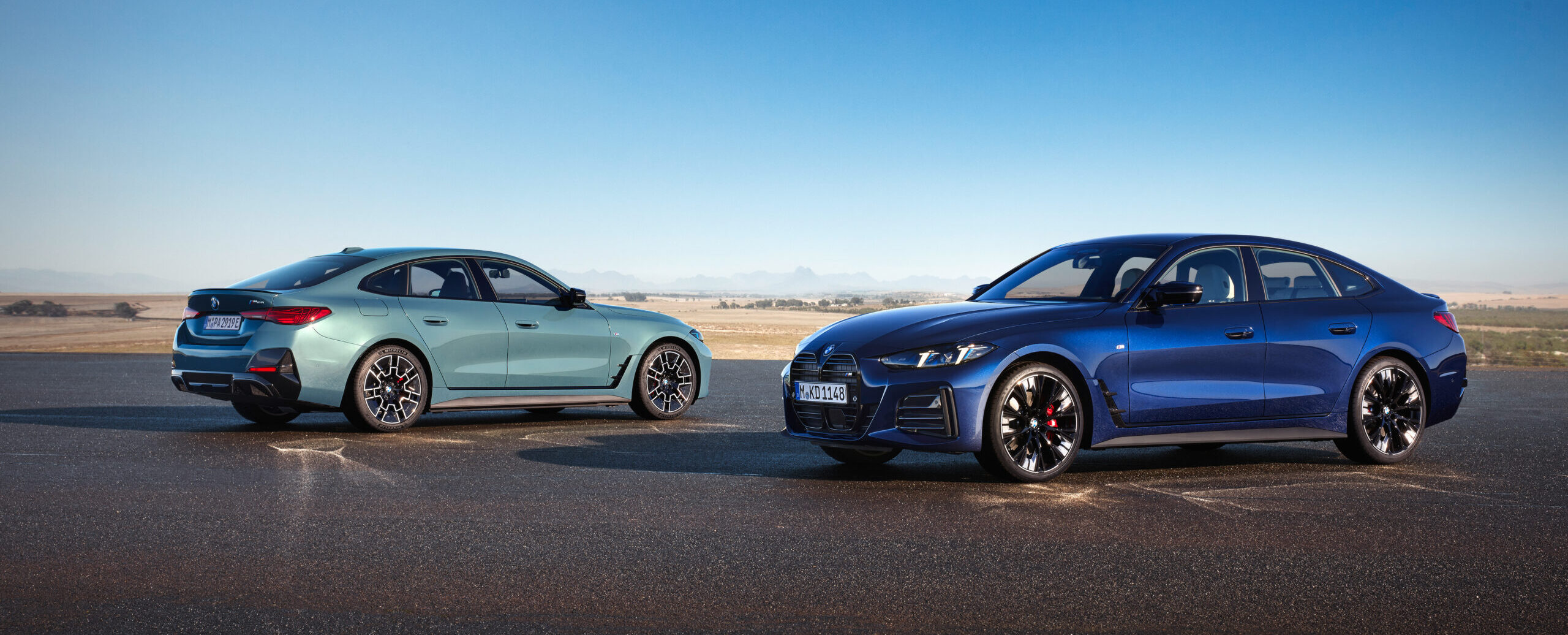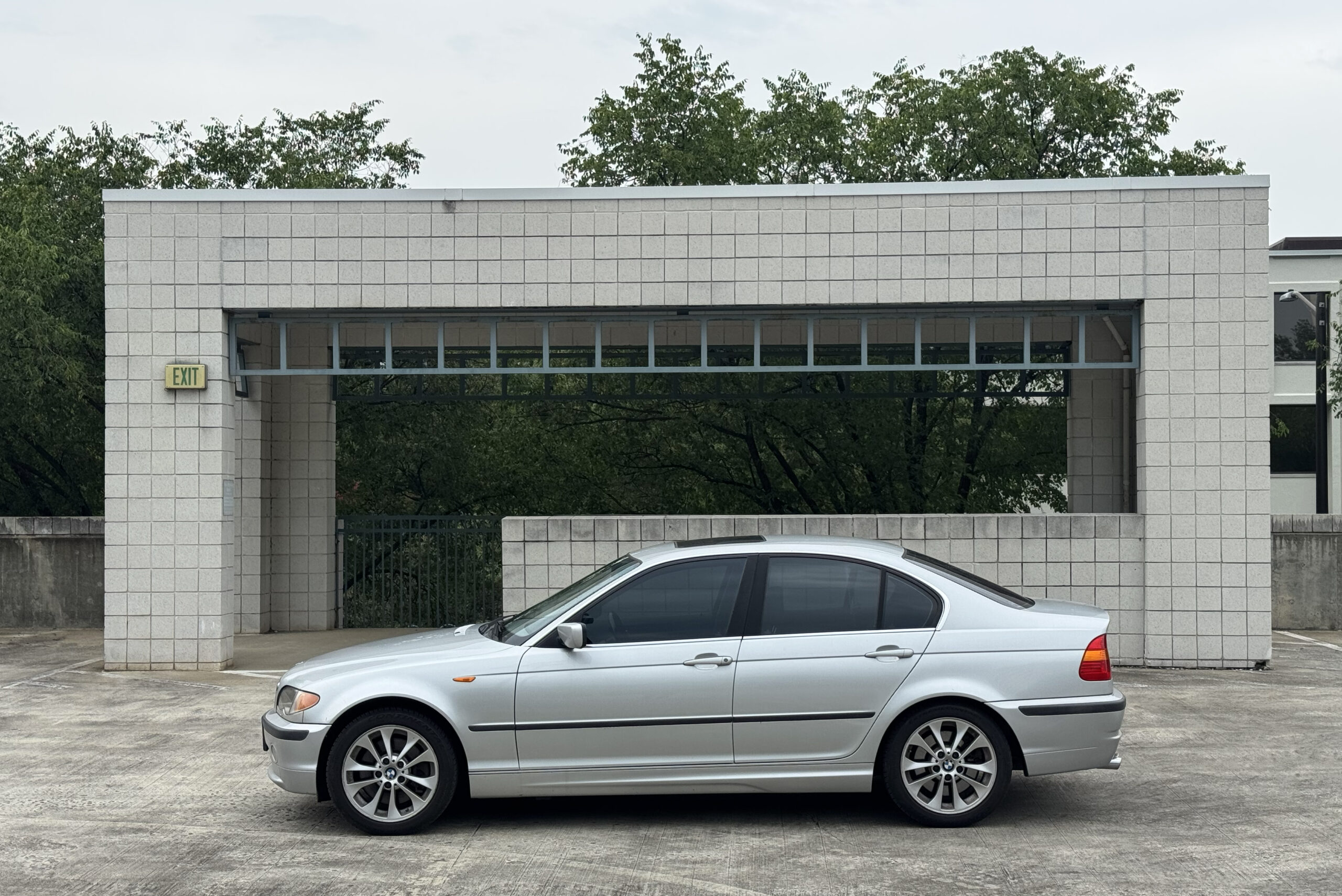When last we saw Carter, the inexpensive, surprisingly solid, drop-everything-and-buy-it ’76 2002, I’d just replaced the rod bearings and shimmed the oil-pump chain. That repair, along with replacing the front strut-tower and rear shock-tower bushings, turned the car from a thunky-clunky chainsaw-under-the-hood beater to a 2002 that was surprisingly pleasant to drive.
As I said in the earlier pieces, the car had fallen into my lap, and I really couldn’t turn it down at the price for which it was offered to me. But part of my justification for buying it was that I thought it was in the Goldilocks zone as a candidate for a 168-horsepower six-cylinder M20 engine swap. That is, if you’re going to do all the work and modification necessary to put a non-stock engine in a car, the car shouldn’t be such a crap can that it’s not worth it—but neither should it be so nice that you don’t want to cut it up.
Carter seemed to fit the bill nicely.
After I got the car running and driving well, there was less than a week before I left for the Vintage, so I had folks on social media egging me on to drive the car down to Asheville, North Carolina. While that was never going to happen, it did give me a larger context in which to experience the car—that is, while I was driving it around locally, enjoying the fruits of my bushing and rod bearing-related labors, I asked myself, “So, would you take this car on a Vintage-like road trip?”
The answer, perhaps not surprisingly, was a quick and resounding no.
I mean, I have three other 2002s, all of which are better sorted, and two of which have air conditioning, as well as three M30-powered a/c-equipped cars. Plus, there was just something about the car’s vibe that wasn’t aligned with mine. I was glad that I rescued and revived it, but it wasn’t really speaking to me. This spawned the next obvious question: “Are you really going to keep this car and do an M20 engine swap on it?”
The answer to that, I realized, was a surprising no.
And just like that, as Carrie Fischer would say, I decided to sell Carter.

Yup, time to go.
Now, I don’t think of myself as a flipper. Strike that; I’m not a flipper. I buy cars that are well-priced, that speak to me in some way, and that I sense will, when I own them, have a story that I can write about. I keep them for as long as it makes sense. At some point, in order to keep the Siegel household solvent, I’ll sell a car, and it’s usually not last-in-first-out. Only rarely have I bought cars and sold them quickly, and when I have, it’s usually because they’ve fallen into my lap as opposed to being something I’ve sought out, or because I’ve found something else I want more.
Here, it was a combination of factors. These included high expenses from three recent road trips, high projected expenses from an M20 conversion, the idea that if the car wasn’t really speaking to me now, it was unlikely to do so even with more torque and horsepower, and the fact that several people had sent me “If you’re ever going to sell Carter, contact me” emails.
But maybe the biggest single factor in the “sell it now” decision was that I intuitively knew that having washed the nine months of grime off the car and cleaned the interior and made it fairly presentable, resurrected the engine from its chainsaw-sounding hell by replacing the rod bearings and shimming the oil pump, and quieted down the suspension thunks and clunks with nothing but strut and shock-tower bushings, I was right at the point on the curve where by selling the car now, I’d get the largest return for the smallest amount of cost and effort. If you really dig a car, this calculus is irrelevant, but if you don’t, it can be irresistible.
There was still, however, one thing I felt I had to do: deal with the console.
Carter had a rather unusual center console. The side pieces were made from wood and fiberglass resin, and appeared to have been fabricated using Behr a/c console side pieces as templates. (Maybe they actually were Behr pieces with the vinyl stripped off. I don’t know. The Behr pieces always seemed too light to me to be wood.) The console faceplate was a Behr a/c faceplate, but the radio was installed at the top where the cold air vent would normally be, the radio cutout at the bottom was open, and the ashtray was missing.
I believe that the console was fabricated because the side pieces held the two stereo speakers. It was better than cutting holes in the door panels, but it was strange that whoever did it hadn’t painted the side pieces black. Since they were left as wood, my eye was immediately drawn to them whenever I got in the car, and it bugged the hell out of me.
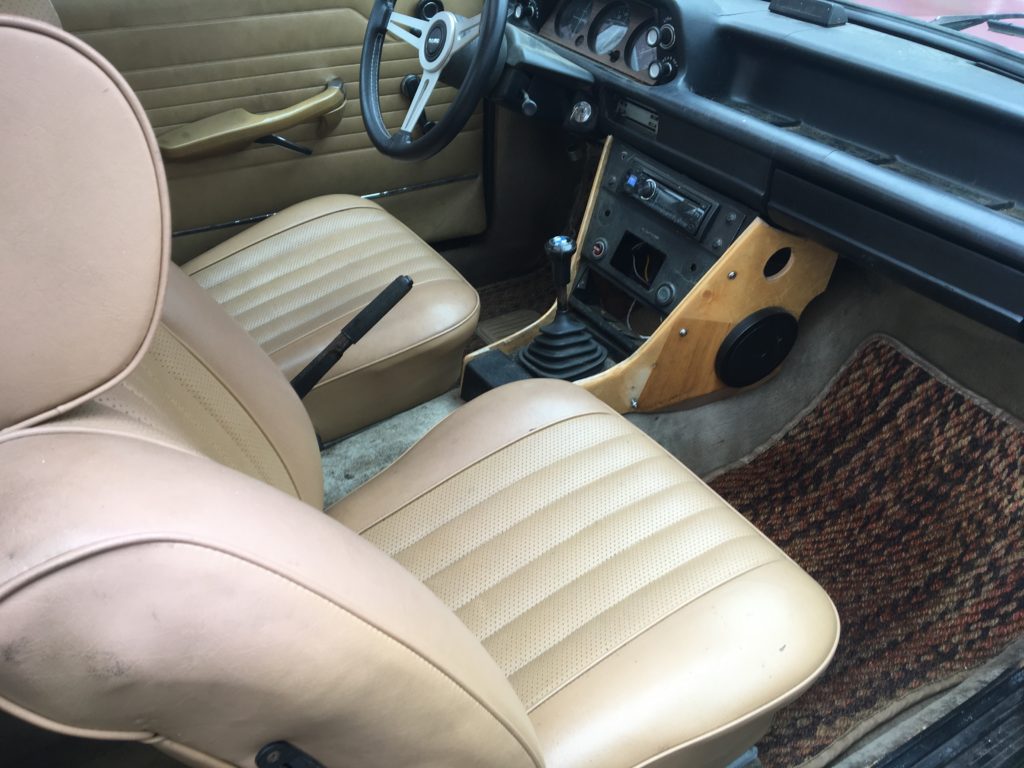
I hated these wood console pieces.
Initially I thought I’d replace them with standard Behr a/c side console pieces, but to my surprise, I found only a left-side piece in my parts stash. Fortunately, these were trivially easy to remove and paint.

One can of black satin-finish paint later…
If I really wanted to go for extra credit, I could’ve blocked off the original radio cutout and mounted an ashtray in the hole in the middle, but simply getting rid of the wood made a huge difference. Why people put weird stuff like this in cars, stuff that anyone’s eye is drawn to as being obviously out of place, is beyond me.
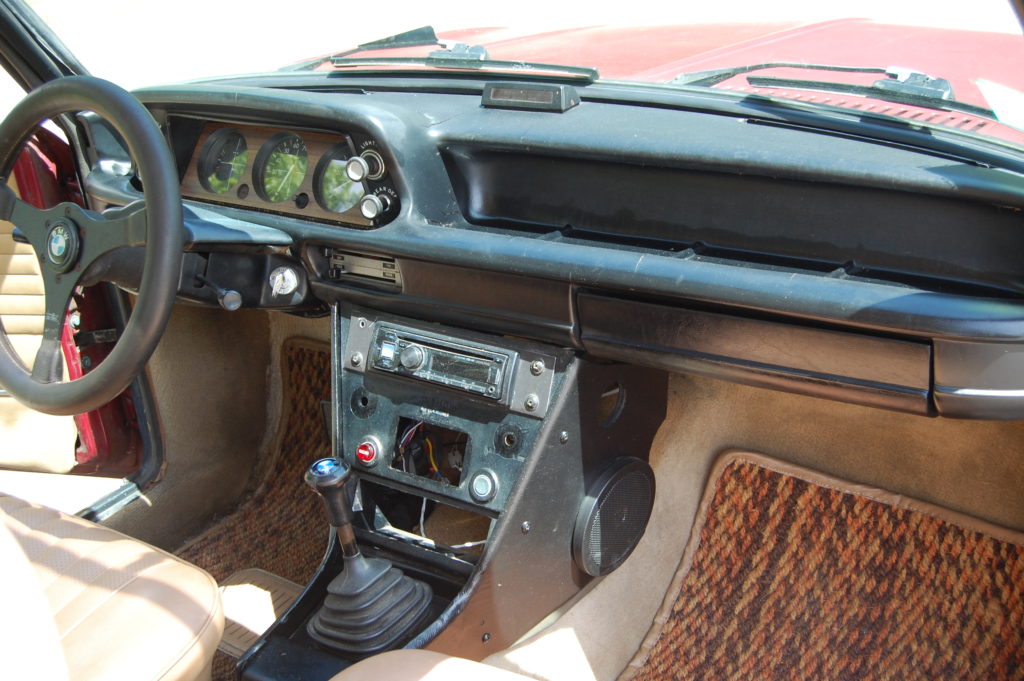
Much better.
My Vintage traveling companion Jose was one of the folks who’d expressed interest in Carter. I gave him dibs and right of refusal. At breakfast the morning of the halfway point of our trip down to the Vintage, Jose and I talked in detail about the car. I was surprised when he told me that he was interested because he had an S14 engine he wanted to swap into something. In fact, he’d bought a whole car—the S14 was in a fender-flared square-taillight car that turned out to be much rustier than expected.
As he described the donor car, I remembered seeing it for sale a few months agoon Facebook Marketplace. I’m hyper-honest with regard to representing cars, and I turn that up even higher when friends are involved. “I’d be surprised,” I said, “if you drive Carter and come away thinking that it’s S14-worthy, but it’s for you to judge.”
After getting back from the Vintage, I wrote up Carter’s detailed description and did the obligatory photography and videos needed to sell the car, including putting it up on my midrise lift and videoing a walk-through of the undercarriage, showing the two rust areas (some weakness at the bottom of the right fender, rust bubbles on the rear of the right rocker) as well as the rust-remediation work that had previously been done. When I got the car in sunlight to photograph it, I noticed for the first time that it had been color-changed not once but twice (it was originally Sienabraun, then completely repainted Malaga, including the engine compartment and trunk, then the exterior was resprayed Granatrot), and that the lower left corner of the front windshield was lifting to the point where you could see light through the gasket gap. I’d already decided to sell it, but these things squelched any second-guessing I might have had.
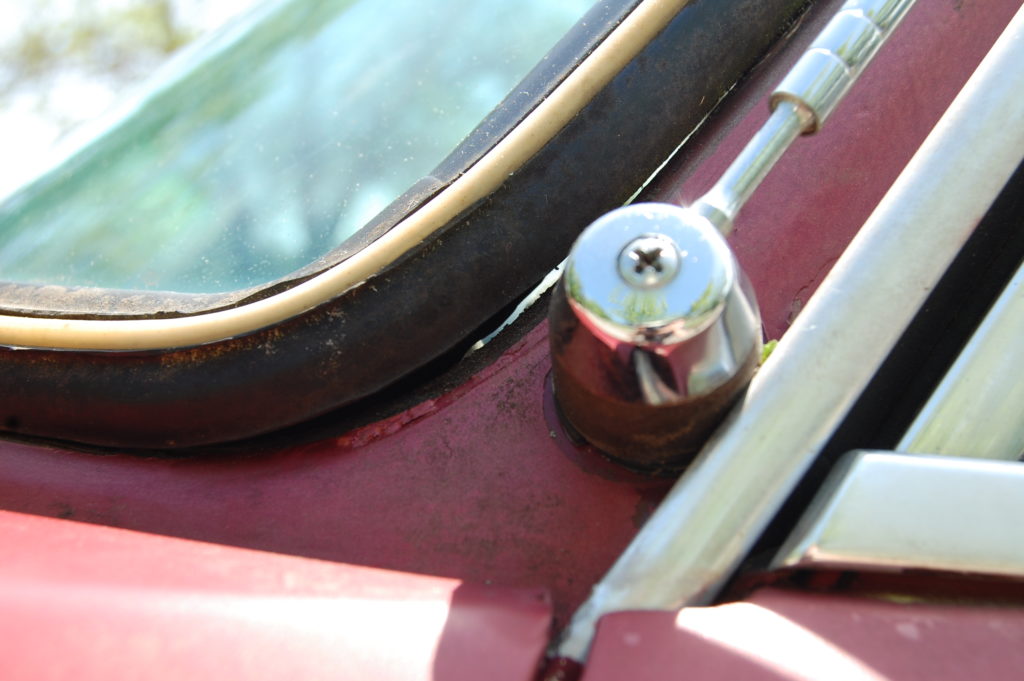
This was a surprise.
I sent the description, photos, and videos to Jose. They didn’t scare him off. He came over the next day and looked at the car. After driving it, he made me a reasonable offer. I thought about it carefully, chose my words carefully, and said, “It’s funny that I’m backing out of using the car for an M20 conversion, but you want it for an S14 conversion.” Then advised him that if he had an S14 burning a hole in his garage, in the long run he’d be happier with a round-taillight car that didn’t have so many asterisks attached to it. I gave him until the next morning to think it over before I began advertising the car. I think he made the right choice to pass.
This is why my wife calls me the world’s worst used-car salesman. But hey, we all do what we think we need to in order to look at ourselves in the mirror in the morning and like what we see.
I then ran down the other three “If you ever sell Carter” prospects. One guy had floated trading me an E46 RWD stick sport-package wagon, but when he read my detailed description and saw the photos, he backed away. Another fellow in New Hampshire said, “Contact me when it’s done.”
I had thrown the E30 14×5.5″ steel wheels and three-year-old tires that had bounced band and forth between Louie, the ’72 2002tii, and Bertha, the ratty ’75, onto Carter just to have something safe to drive on. I didn’t really expect to sell the car with them on, but the thirteen-inch Alpinas that were on Carter when I bought it were worth more in an à la carte sale, and my Facebook Marketplace/Craigslist search didn’t yield another well-priced set of 2002 or E30 wheels with good rubber; the closest I got was a set of E21 320i turbines with tires so old they didn’t have date codes on them.
I didn’t really want to let go of the E30 steelies, but once they were photographed on the car, their fate was sealed. It was a relatively small sacrifice, though; I’d bought them a few years ago for Bertha, but was surprised that I never really liked the way they looked. For most 2002s, I’m finding that, over time, I prefer the lightness of thirteen-inch wheels and tires anyway.
I put Carter up on Facebook (on my page, the Vintage group, the BMW 2002 page, and others), accompanied by links to the photos and the walkaround, undercarriage, and driving videos. My $8,000 price was well received, and seemed to be well-calibrated to the market (if it’s too low, you get flooded with “I’LL BUY IT RIGHT NOW” offers, and I wasn’t). Two people scheduled viewings the coming Saturday. The first fellow, a gentleman from Rhode Island, bought it on the spot. The car is still here while we wait for checks to clear, registration forms to be processed, and friends to be pressed into service for transportation, but the deal is done, and the car should be gone by next week.
I’ll resist the hail of obvious analogies that can be made between Carter and his famous namesake. But just because he didn’t stay doesn’t mean that I didn’t enjoy his presence. It always feels like a privilege to me, playing whatever role I have to play in these cars’ lives, giving them what they need, acting like a responsible foster parent, reading them stories and tucking them into bed, and transitioning them into a more permanent situation.

Bye, Carter. As Neil Young said, long may you run.—Rob Siegel
Rob’s new book, The Best of The Hack Mechanic, is available here on Amazon, as are his seven other books. Signed copies can be ordered directly from Rob here.

